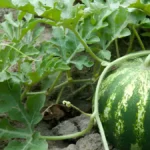Rubus fruticosus, or blackberries, are a well-liked berry valued for their nutritional value and sweet-tart taste. Due to their many culinary applications and relative ease of production, they are commonly grown in both commercial farms and household gardens. Propagating blackberries is simple. Suckers, tip layering, and cuttings (root and stem) are the methods available for propagating these plants. This is a thorough guide for propagating blackberries.
Propagating blackberries from cuttings:
- Root cuttings
- Cut portions of the root, about 3-6 inches long, from a healthy plant that you dug up in late winter or early spring.
- In a bed that has been created, plant these root cuttings horizontally and cover them with 1-2 inches of dirt.
- Apply water and maintain the moisture content until new growth emerges.
- Stem cuttings
- Cut healthy canes into 6 to 8-inch portions in late spring or early summer.
- Take off the bottom leaves, then immerse the cut end into the rooting hormone solution.
- Keep the planting media moist as you place the cuttings in a mixture of peat, perlite, or sand.
- The cuttings should be placed in a warm, humid area, such as a greenhouse or a tray covered with plastic.

Tip layering
- Choose sturdy, long canes in the late summer and bend the tips to the ground.
- If necessary, secure the tips with a small rock or garden staple after you have buried them 2-4 inches deep in the ground.
- Over the fall and winter, roots will grow from the buried tip.
Suckers (Shoots)
- Blackberries’ roots spontaneously sprout suckers or new branches.
- Dig up these suckers in late fall or early spring, but make sure some of the root system is still connected.
- Plant them again at the same depth as before in a bed that has been prepared.
Division
- Take a mature blackberry plant and split its root ball into portions with a sharp knife or shovel in the early spring or late fall.
- Make that a piece of the root system and numerous canes are present in each division.
- Replant the divisions right away on a ready bed.
Benefits of propagating blackberries
- Cost-effective: By using propagation, gardeners can increase the size of their blackberry patches without having to buy new plants.
- Plant Health: Vigorous growth and increased yields can result from propagated plants that are in good health.
- Variety: It makes it possible to share and preserve particular blackberry kinds that can be difficult to locate on the commercial market.
Conclusion:
Propagating blackberries is a gratifying procedure that, with proper care and attention, may produce an abundance of fruit. Blackberry plantings can be effectively expanded by gardeners by knowing and using the right propagation strategies. This will allow them to enjoy the benefits of their effort and add to the sustainability and biodiversity of their gardens.
Certainly! If you’d like to learn more, please consider following our WhatsApp Channel: Harvest Gardening
A frequently asked questions:
Q1: What type of soil is best for propagating blackberries from cuttings?
A1: Cuttings of blackberries grow best in well-draining soil that ranges in pH from 5.5 to 7.0, which is slightly acidic to neutral. Drainage and soil quality can both be enhanced by adding organic matter.
Q2: How to wash blackberries?
A2: Blackberries should be carefully rinsed under cold running water before being drained and dried on paper towels. To stop them from absorbing water and losing flavor, don’t soak them.
Q3: What is the best climate for growing blackberries?
A3: Temperate regions with mild winters and warm summers are ideal for blackberry growth. Hardiness zones 5–10 of the USDA can support their growth.



